Operating an Olympic-sized pool
by Sally Bouorm | August 1, 2012 8:53 am
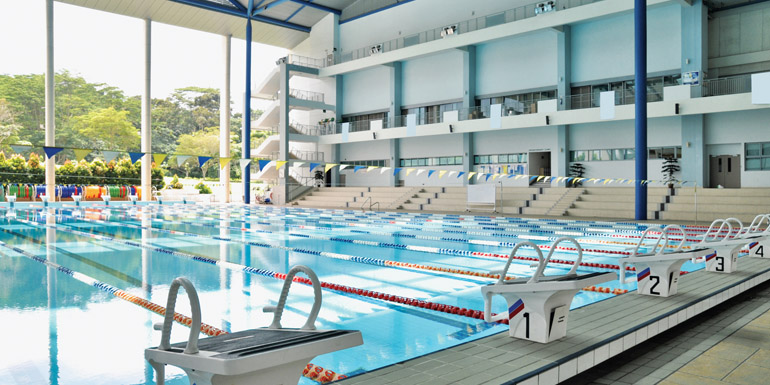 [1]
[1]By Roy D. Vore, PhD
When it comes to water maintenance, a pool is just a pool, right? But how about treating and managing a 50-m (164-ft) Olympic pool with 1,135,624 L (300,000 gal) of water, which must be sparkling clear every day? Regardless of a pool’s water volume, disinfection, water balance, and filtration remain the same.
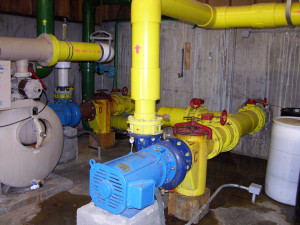 [2]
[2]However, a casual stroll through the pump room of one these massive facilities can be quite eye opening and leave one to think differently. For instance, they do not use typical one-horsepower (hp) pumps and 23-kg (50-lb) sand filters, nor can a maintenance professional quickly change the filter sand with a ‘shop vac’—think rather wheel barrows, shovels and skid loaders.
To put this into further perspective, should an operator find sorting out unlabelled plumbing at a mid-sized hotel pool challenging, consider what it would be like at an Olympic aquatic facility, which uses 305-mm (12-in.) lines and has a maze of piping.
And even though inventory control and chemical storage for maintaining a hotel pool can prove challenging, try handling 1,361 kg (3,000 lbs) of sodium bicarbonate (NaHCO3), 757 L (200 gal) of muriatic acid (hydrochloric acid), 378 L (100 gal) of sodium hydroxide (NaOH), 2,000 kg (907 lbs) of calcium chloride (CaCl2) and gas chlorine (Cl), and 45 kg (100 lbs) of calcium hypochlorite (Ca[ClO]2), which would be routinely stocked for a typical Olympic-sized aquatic facility.
This brings new meaning to containment, employee hazard and communication training, and safety. Despite their size, however, Olympic aquatic facilities are simply an overgrown ‘big brother’ to mid-size pools. The fundamentals remain the same; however, managing them is another issue.
A typical water treatment regime
Disinfection systems must be automated and sized appropriately to meet each facility’s varying swim loads. It goes without saying that hand feeding chemicals is not appropriate. There are no special requirements for testing chlorine concentration; the same periodic manual testing using N, N-diethyl-p-phenylenediamine (DPD) or ferrous ammonium sulfate-N, N-diethyl-p-phenylenediamine (FAS-DPD) must be performed to confirm the settings in the automated chemical feed system.
Manual tests should be performed every two hours, or as specified by local code if less than two hours. In polling several facilities, it was determined most keep free chlorine levels under 2 milligrams per litre (mg/L) or parts per million (ppm) with the understanding that higher levels could lead to higher amounts of airborne chloramines.
Water balance parameters and disinfection requirements do not change with pool size either. As Michael Orr, executive director of the Foundation for Pool & Spa Industry Education[3] (FPSIE) points out, one of the easiest ways to lose control is by adding large amounts of any water balance chemical to the pool over a short period of time. In doing so, it may take numerous days to straighten out.
Facility management on a grand scale
The real complexity of operating an Olympic-sized facility is not necessarily related to water treatment but rather meeting the requirements of its diverse group of patrons, while balancing the personalities of its large staff. Although these are not treatment parameters as such, they are vital to a facility’s smooth and efficient operation.
Keeping patrons happy
 [4]
[4]Due to their size, for example, many Olympic facilities must be able to attract and maintain the attention of a variety of special interest groups as they are vital sources of revenue. Therefore, as with any facility, scheduling is important—especially in shared facilities where conflict of interest can often occur.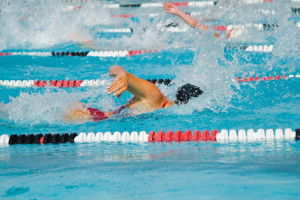 [5]
[5]
For instance, youth swimming classes and aquatic exercise programs for older patrons may prefer water temperatures between 28.3 and 30 C (83 to 86 F), while swim teams prefer water temperatures ranging from 25.5 to 27.7 C (78 to 82 F). Failure to hit the ideal temperature range for each scheduled group will not only result in frustrated patrons, but also disappointed management. Immediately before, during, and after each event the entire focus must be on the requirements of each scheduled group. One way to clarify the facility’s goals is to publish, distribute, and discuss with all interest groups, a clear mission statement.
Keeping staff content
The number of staff required to manage an Olympic-sized facility is often disproportionately larger than what would be found at most smaller facilities. This is due to necessity in providing not only continuous lifeguard coverage, but also operator, maintenance personnel, and the supervisors necessary to provide administrative co-ordination. Minimum coverage must be maintained at all times or the doors cannot open. Further, all staff members must be trained appropriately and all training must be documented. This in itself can quickly become a major task.
Unfortunately, another aspect to requiring a large staff is the likelihood of personnel issues. Normally with larger facilities comes more complex human resource departments, which can assist in hiring, recovering a disgruntled employee, and when necessary, terminating a problem employee. Those who have worked with larger human resource departments know they can often work at their own pace. For instance, where a large facility operator may find it takes more than a year of interventions, negotiations, meetings and a large amount of documentation before a troublesome employee can be terminated, the same operator at a mid-size facility could have dismissed the same employee within a week.
Communication is key
Accidents can happen in all types of facilities. However, as facility size increases, and the number of patrons escalate, it is more likely for an accident to occur. This increases the need for aquatic risk management and comprehensive emergency response plans[6] (ERPs). Training in risk management and ERPs is beyond that offered in basic operator.
Therefore, the capstone for all operations is communication. This must go beyond staff training and publishing a mission statement to the public. Communications should be bidirectional, timely, and free to carry both good and bad news.
Here is a case example: The Sunday operator of an aquatic facility failed to report the pool’s chlorine tank was empty until the supervisor arrived Monday morning. By this time, however, a major algae bloom had started. The operator’s failure to pass along the critical information in a timely manner led to a potential recreational water illness (RWI) outbreak as well as the avoidable pool closure, which was required to correct the problem. In hindsight, a simple 60-second phone call would have prevented both. Further, if this would have happened during a swim meet, the damage to the facility’s reputation would have been enormous.
While training and demonstrating the desired traits for personnel can help, it is also necessary to have the right mix of personalities and maturity on each and every shift to avoid these problems.
Water and air quality
Beyond basic water balance and sanitation, two health issues stand out—chloramines and Cryptosporidium[7] (Crypto). While these problems are not unique to Olympic competition pools, the level of difficulty they pose can be just as great as the pool size.
Chloramines
Chloramines are the bane of most aquatic facilities and are a major concern for some indoor pools. Chloramines, those containing nitrogen (N), which appear in DPD tests, and the bigger category of disinfection byproducts (DBPs), which are not always evident in DPD testing, are the inevitable result of mixing a halogen oxidizer with organic material or ammonia (NH3).
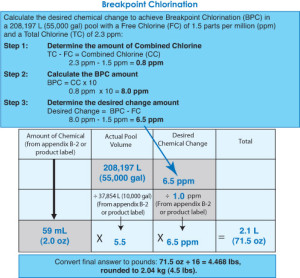 [8]
[8]Non-volatile DBPs can be an issue for all facilities, but recent attention has been on indoor pools. Even though they exist in the air, all poor air quality issues start with high levels of halogenated compounds in the water. In fact, numerous reports have documented the deterioration of air quality during multi-day events at indoor pools. Two factors contribute to this situation. First, the sudden multi-day spike in bather load is obvious; however, it is the chemical nature of this load, which leads to the second. A significant portion of the bather load influx comprises organic compounds, which respond in a variety of degradation pathways, many of which take hours or days to complete. This is in sharp contrast to ammonia, which responds to breakpoint treatments instantly.
For instance, some of the organic compounds shed on the first day of the meet are just beginning to react and be volatilized by day three. Thus, the organic compounds shed on day one are reacting at the same time as new ammonia-type compounds are being introduced on day three. The chemistry involved in oxidizing organic compounds is far more complex than simple breakpoint treatments, which are designed to remove ammonia.
Air quality
The challenge is furthered in the effort to maintain ‘acceptable’ air quality, while not impacting the facility’s availability. The definition of ‘acceptable’ is vague as there is no quantitative assay readily available. USA Swimming[9], for example, leans toward installing ultraviolet (UV) systems to eliminate chloramines in the water before they can become airborne. Ozone systems can also be used to improve both water and air quality.
Although this capital intensive approach may work daily, partial water replacement is also an option. The late Neil Lowry, PhD, who was a regular contributor to Pool & Spa Marketing, was a big proponent of daily water replacement and contributed to Ontario’s regulations for public spas, which mandates the addition of “make-up water during each operating day in an amount not less than 20 L (5.3 gal) per bather.” This, of course, requires balanced fill water. Another budget-friendly approach is using potassium monopersulfate (MPS) (i.e. non-chlorine shock oxidizer) to pre-emptively oxidize organic compounds before they form DBPs.
Each of these methods has been used successfully—both independently and in combination; the only limitations are the operator’s skill and budget. However, once DBPs become airborne, they must be either exhausted to the outside or absorbed by an activated carbon filter in the facility’s heating, ventilation, and air conditioning (HVAC) system.
Proper air circulation is just as vital as proper water circulation. Even with 100 per cent hourly air replacement, the air quality can be poor if the vent placement produces stagnant air. In fact, many facility operators routinely schedule facility downtime—before and after scheduled groups—to make any necessary water chemistry adjustments, particularly after the heavy use, which occurs during swim meets.
| FACILITY MAINTENANCE: USING LAYERS OF PROTECTION |
|---|
| To ensure sparkling pool water and indoor air free of chloramines, Sam Fruia, a Certified Pool/Spa Operator® (CPO®) and National Swimming Pool Foundation (NSPF®) Instructor (NSPF®I), who operates the Conroe Independent School District’s (CISD’s) natatorium, uses a ‘layers of protection’ approach to keep both as clean as possible. The CISD natatorium, located 50 km (30 miles) north of Houston, Texas, is just shy of 3,785,411 L (1 million gal.). Fruia is a self-proclaimed believer in finding better use of resources that do not require bigger budgets; his layers of protection include:
|
Understanding RWIs
With the increased understanding of RWIs, the industry now recognizes that aquatic facilities are major conduits for the spread of Crypto through both swimming and the general community. One of the most difficult challenges facility operators face is convincing coaches that ill team members must not be allowed to enter the pool/swim until at least seven days after their symptoms have ended. One reason for this is infected bathers can continue to shed oocysts for up to two weeks after diarrhea has stopped.
 [10]
[10]It is not known how many Crypto outbreaks have occurred at various swim meets; however, one occurrence was documented in 2008 at a facility in New Mexico. In this case, at least one competitive swimmer continued to practice while ill with diarrhea. During the state and city championship meets, 640 other athletes were exposed and at least 92 (14.3 per cent) became ill. These newly infected athletes then went on to potentially contaminated 25 other pools and one waterpark.
Crypto is the only infectious RWI that is not readily killed by chlorine. And, even though an outbreak can occur at any time, there are no special disinfection requirements for Olympic competitive facilities. The current draft disinfection module of the Centers for Disease Control’s (CDC’s) Model Aquatic Health Code[11] (MAHC) does not classify competitive pools as an ‘increased risk facility,’ and therefore they are not required to install a supplement disinfection system (e.g. UV, ozone, or enhanced filtration) to control Crypto. Even if a facility employs a supplemental disinfection system there is still a window of infection, which extends many hours after a fecal accident. The only absolute way to prevent Crypto outbreaks during a swim meet is to keep infected athletes out of the water.
While Olympic-sized competition pools may present a disproportionate complexity in management, its cleanliness is only limited by the skill, resourcefulness, and leadership of the lead operator.
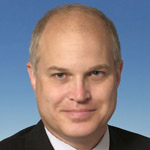 Roy D. Vore, PhD, is the senior aquatics consultant for Vore & Associates, LLC, a consulting firm specializing in public health, recreational water illness (RWI) management, and water chemistry and regulatory issues in Wilmington, Del. He is a Certified Pool/Spa Operator® (CPO®) and a CPO® Instructor through the National Swimming Pool Foundation (NSPF®). Vore is the lead author on the NSPF’s Recreational Water Illness manual, published June 2012 and is a contributor to the Centers for Disease Control and Prevention’s (CDC’s) Model Aquatic Health Code (MAHC). He can be reached via e-mail at roy.d.vore@gmail.com[12].
Roy D. Vore, PhD, is the senior aquatics consultant for Vore & Associates, LLC, a consulting firm specializing in public health, recreational water illness (RWI) management, and water chemistry and regulatory issues in Wilmington, Del. He is a Certified Pool/Spa Operator® (CPO®) and a CPO® Instructor through the National Swimming Pool Foundation (NSPF®). Vore is the lead author on the NSPF’s Recreational Water Illness manual, published June 2012 and is a contributor to the Centers for Disease Control and Prevention’s (CDC’s) Model Aquatic Health Code (MAHC). He can be reached via e-mail at roy.d.vore@gmail.com[12].
- [Image]: http://poolspamarketing.com/wp-content/uploads/2012/08/dreamstime_4232837_edited-1.jpg
- [Image]: http://www.poolspas.ca/wp-content/uploads/2015/05/PumpRoom.jpg
- Foundation for Pool & Spa Industry Education: http://www.fpsie.org
- [Image]: http://www.poolspas.ca/wp-content/uploads/2015/05/dreamstime_2901393.jpg
- [Image]: http://www.poolspas.ca/wp-content/uploads/2015/05/dreamstime_2362700.jpg
- emergency response plans: http://www.nspf.org
- Cryptosporidium: http://en.wikipedia.org/wiki/Cryptosporidium
- [Image]: http://www.poolspas.ca/wp-content/uploads/2015/05/BreakpointExample.jpg
- USA Swimming: http://www.usaswimming.org/DesktopDefault.aspx
- [Image]: http://www.poolspas.ca/wp-content/uploads/2015/05/comp_CDC_Poster-copy.jpg
- Model Aquatic Health Code: http://www.cdc.gov/healthywater/swimming/pools/mahc/
- roy.d.vore@gmail.com: mailto:roy.d.vore@gmail.com
Source URL: https://www.poolspamarketing.com/trade/operating-an-olympic-sized-pool/